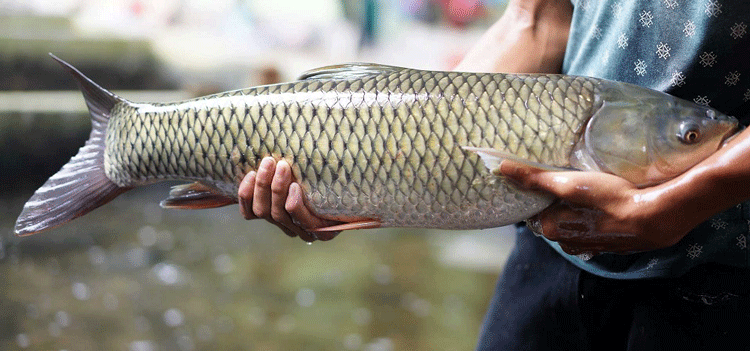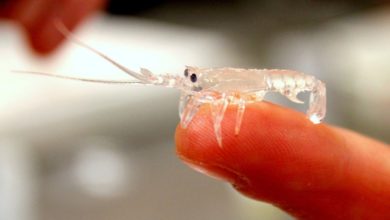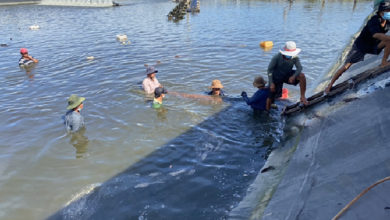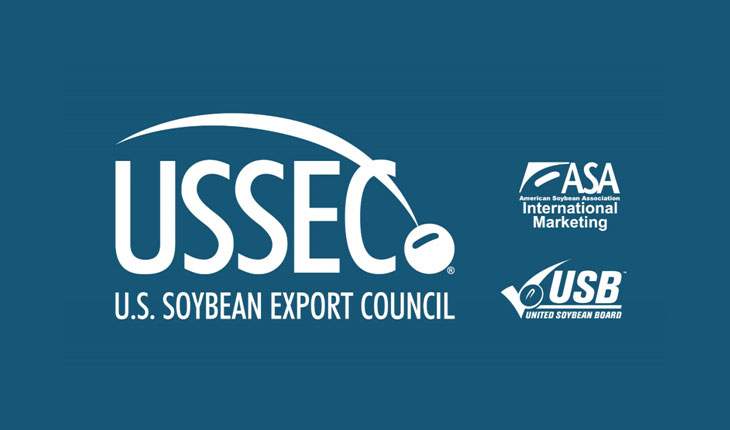At a recent shrimp industry conference in Bac Lieu, Deputy Minister of Agriculture and Rural Development Phung Duc Tien warned that without major breakthroughs, Vietnam’s shrimp exports may struggle to surpass USD 5-6 billion by 2030, mainly due to high raw shrimp costs limiting global competitiveness.
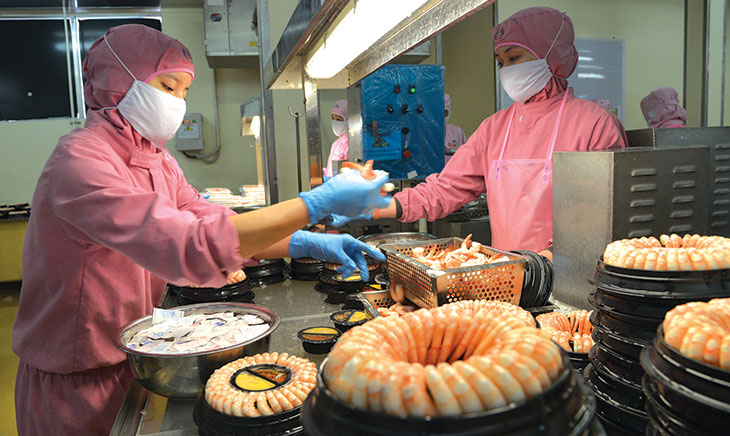
A shift in approach: The role of high-tech shrimp farms
Given these challenges, the industry must adopt new strategies. Among them, high-tech shrimp farms in the Mekong Delta have demonstrated superior efficiency compared to traditional farming models.
According to Tran Thanh Trieu, a shrimp farmer in Long Dien commune, Long Hai district, Bac Lieu province, the level of investment in high-tech shrimp farming varies depending on the farm. However, beyond lining pond bottoms with plastic, many farms have adopted technologies such as:
- Automated feeding systems that use sensors to monitor feed levels in the pond.
- Water quality monitoring equipment to track environmental conditions.
Larger-scale farms may also incorporate Recirculating Aquaculture Systems (RAS), which filter and reuse water to improve quality control and reduce environmental impact. Additionally, some farms apply Biofloc technology, where beneficial microbes break down organic waste, minimizing the need for frequent water changes.
Alongside technology adoption, standardizing farming models is also crucial for reducing production costs and increasing profitability.
Trieu noted that directly sourcing shrimp feed from factories could cut costs by 50%, but many farmers purchase feed on credit through intermediaries, leading to significantly higher costs. For example, producing 100-count shrimp per kilogram currently costs VND 80,000–100,000/kg, which is VND 20,000/kg higher than if feed were purchased directly from the manufacturer.
Similarly, Ta Hoang Nhiem, Chairman of the Bac Lieu Shrimp Association and Director of a high-tech shrimp farming cooperative, explained that 40% protein shrimp feed costs VND 40,000/kg through dealers, compared to VND 27,000–28,000/kg when bought directly from factories. For a 12,000 m² farm, purchasing feed through intermediaries increases costs by approximately VND 700 million per production cycle.
Both Trieu’s farm and Nhiem’s cooperative face high depreciation costs due to short investment cycles of just 3–5 years. For example, Trieu’s 10-hectare farm required VND 12 billion in investment, with an estimated 5-year project lifespan, meaning an annual depreciation cost of VND 2.4 billion. This forces farmers to stock high shrimp densities to remain profitable, but higher stocking densities also increase disease risks.
According to Dr. Tran Huu Loc, founder and CEO of EcoSeafood Group, high-tech shrimp farms often struggle with high variable and depreciation costs, making large-scale expansion difficult.
To address this, EcoSeafood Group established E.S.G Farm two years ago, covering 30 hectares with 40 shrimp ponds, complete with nursery ponds, wastewater treatment systems, a 2km water intake system for pathogen control, and 30% of the area allocated for reforestation. This model aims to simultaneously reduce both production and depreciation costs.
By scaling up operations, farms can purchase inputs like shrimp feed directly from manufacturers at lower prices. For instance, by bypassing intermediaries, feed costs can drop to VND 20,000–22,000/kg, compared to VND 40,000/kg when bought on credit through dealers.
As a result, E.S.G Farm can produce 50-count shrimp at just VND 50,000/kg, VND 30,000–40,000/kg cheaper than small-scale farms.
Additionally, by extending the investment cycle to 10 years, E.S.G Farm significantly reduces depreciation costs, allowing lower stocking densities while still maintaining profitability.
For example, with a fixed investment of VND 20 billion over a 10-year lifespan, annual depreciation costs fall to VND 2 billion. Given a production profit of VND 50,000 per kilogram, the farm needs to sell only 40 tons per year to break even, making lower-density stocking a viable and sustainable option.
Based on these insights, Dr. Loc advises shrimp farmers to design their farms strategically to achieve lower breakeven volumes, allowing them to remain profitable even at lower stocking densities.
Reducing costs to compete with Ecuador and India
Le Van Quang, Chairman of Minh Phu Seafood Group, emphasized that Vietnam’s high shrimp production costs severely limit its competitiveness against Ecuador and India. For instance, Ecuador produces 30–35 count shrimp at just USD 2.6/kg, whereas Vietnam’s costs are significantly higher, forcing exporters to lower prices to remain competitive.
According to Quang, Vietnam’s shrimp industry still survives thanks to value-added processing, while low-value raw shrimp is dominated by Ecuador and India. This explains why Vietnam’s shrimp exports have stagnated at around USD 4 billion for years.
Tran Thuy Que Phuong, Chief of Staff at the Vietnam Association of Seafood Exporters and Producers (VASEP), stressed that cost reduction is the key to increasing Vietnam’s global market share.
Many industry experts believe that the E.S.G Farm model could be a game-changer for lowering production costs, particularly in the Mekong Delta. However, widespread adoption and real-world testing are necessary before it can be recognized as a scalable solution.
Dr. Loc revealed that EcoSeafood Group is working with the Bac Lieu and Ca Mau provincial governments to expand this model. Once more farms achieve success, farmers will gradually shift their mindset, recognizing that cost efficiency requires large-scale collaboration and supply chain integration.
He believes that for Vietnam’s shrimp industry to thrive, small-scale farmers must start thinking like business owners, forming cooperatives where landowners, investors, and experienced managers collaborate.
“If we can unite hundreds of thousands of small-scale shrimp farmers into several thousand large, high-tech farms, the benefits won’t just be for individual farmers but for Vietnam’s entire shrimp industry,” Loc concluded.
VFM



